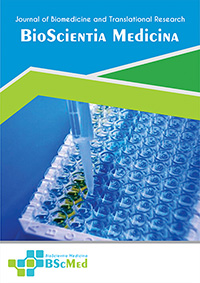Main Article Content
Abstract
Background: Familial hypercholesterolemia (FH) is a rare inherited disorder characterized by high cholesterol levels, primarily high levels of low-density lipoprotein cholesterol (LDL-C). This condition can lead to premature cardiovascular disease. A less recognized but significant manifestation of FH is the development of multiple tuberous xanthomas, which are exogenous masses or fatty deposits on the skin.
Case presentation: This report describes the case of a 4-year-old female child who presented to the Dermatology, Venereology, and Aesthetics Department of Dr. M. Djamil General Hospital Padang with multiple yellowish, painless, and non-itchy lumps on her body. These lumps were located on her knuckles, hands, elbows, buttocks, knees, back of knees, ankles, and feet. The lumps had been progressively increasing in size over the past month. Her medical history revealed that she first developed a yellowish lump on her right ankle two years prior, which gradually spread to other areas of her body. A dermoscopic examination showed a yellow-brown structureless area, and laboratory tests confirmed hypercholesterolemia with elevated LDL levels. Her triglycerides were normal, and both of her parents also had hypercholesterolemia. A histopathology examination confirmed the diagnosis of xanthoma. The patient was diagnosed with tuberous xanthomas and treated with simvastatin 1x10 mg, along with surgical excision of the xanthomas and flap reconstruction under general anesthesia.
Conclusion: This case highlights the importance of a multidisciplinary approach in managing multiple tuberous xanthomas in a child with FH. While surgical excision can effectively remove the lesions, ongoing lipid-lowering therapy is crucial to prevent recurrence and reduce cardiovascular risks associated with FH. Collaboration among dermatologists, pediatric cardiologists, and pediatric nutritionists is vital to ensure comprehensive care and enhance the patient's overall quality of life.
Keywords
Article Details
As our aim is to disseminate original research article, hence the publishing right is a necessary one. The publishing right is needed in order to reach the agreement between the author and publisher. As the journal is fully open access, the authors will sign an exclusive license agreement.
The authors have the right to:
- Share their article in the same ways permitted to third parties under the relevant user license.
- Retain copyright, patent, trademark and other intellectual property rights including research data.
- Proper attribution and credit for the published work.
For the open access article, the publisher is granted to the following right.
- The non-exclusive right to publish the article and grant right to others.
- For the published article, the publisher applied for the Creative Commons Attribution-NonCommercial-ShareAlike 4.0 International License.





